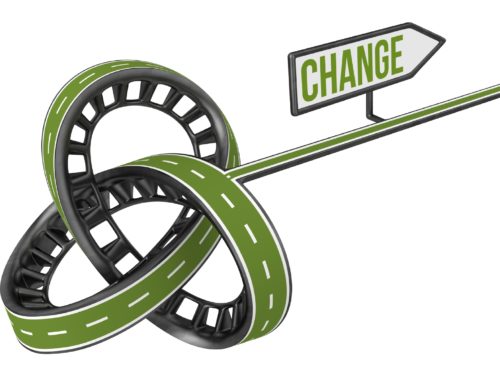The town where I live is a microcosm of the entire country.
Most people – especially those who don’t live here – would disagree with my assertion. I am fortunate to live in a community that is economically better off than the U.S. population as a whole. Citizens enjoy a level of municipal services that is higher than most communities. It is safe. The average response time for emergency services is four minutes or less. The Fire Department will come to your home one time per year to change the batteries in your smoke detector. City workers pick up bulk trash on request. There is no shortage of quality of life or entertainment opportunities. There are over 170 of restaurants in 4.5 square miles. Membership in the town-run athletic club is a one-time fee of $25 for residents.
Likewise, the city staff is highly competent and service oriented. They take pride in their work and professionalism. The occasional mistakes are honest ones made in attempt to do what is right.
Despite the near-Utopian environment, the post cards and letters arriving in my mailbox these days paint a much different – and darker – picture. There are those in my community who want to destroy our quality of life and take over the government for their own purposes. These individuals have hidden ulterior motives, unproven conflicts of interest, and disrespect for transparency. Depending on the source, “they” want to destroy everything that has made our little community special or make the long-overdue changes that will make us great again.
Why the discrepancy?
It is election season when individuals mold reality to fit their chosen narrative.
Here’s an example. Stay with me. This could get confusing.
A central theme in the 2016 election was the inclusion of apartments in the redevelopment plans for a closed big box store. The development will include 350 upscale multifamily units along with 161 townhomes and just over 20,000 square feet of retail space.
The problem was the new development’s proximity to an existing residential neighborhood. Although to be honest, everything is near a residential neighborhood in a town that is only 4.5 square miles.
Opponents ran – and were elected – on a platform that included opposition to the apartments in the re-developed area. The incumbents who voted to include them should, in their mind, be thrown out since they violated their own housing policy that said there are enough multi-family units in town.
Fast forward to 2017, and apartments are again a central issue. Not the ones approved in 2016, but the new ones just approved by the folks who were elected last year. It turns out that the people who previously supported apartments as part of the redevelopment project are aghast that new ones are being approved now. Likewise, the folks who didn’t want multi-family units last year think it is okay to add new upscale ones now since they are next to a hotel not a neighborhood.
If this sounds like the ultimate “first world” problem, you are correct. That’s part of what makes my little town a microcosm of the entire country. Here are three reasons why:
- Most of the issues that fuel voter enthusiasm are easy to communicate and grasp. They are also often trivial in the greater context. Being for or against an apartment development is easy even if they are high-end units. Convincing people why they should or shouldn’t have to pay a little more in taxes to repair aging infrastructure while taking proactive steps to retain employees is more challenging. It’s the same at the national level. Building a wall to keep people out is simple to grasp. Rebuilding our education system to prepare students for 21st century jobs is more complex.
- Negative campaigning works. You may not like it, but there is a reason why everyone goes negative to some degree. It is easier to get people excited about what’s wrong with your opponent than what is right about you. Candidate Trump gave us “Crooked Hillary.” Candidate Clinton gave us “Unstable, Sexist, Racist Trump.” The people running for elected office in my town are giving me their version. Yours will, too.
- During election season, the truth isn’t always factual, and the facts aren’t always the complete truth. It is the rare campaign that tells you both sides of an issue. The position-based blogs and media (both traditional and social) wrap themselves in virtuous names while feeding you only the information that supports their agenda. It is up to you to avoid the confirmation bias that results from only consuming one-sided facts and partial truths. That can be difficult in a perpetual Silly Season world where the next campaign begins the moment the current election is completed.
There are big issues on the horizon in my little town. It has an aging infrastructure. It is an inner ring suburb that wants to keep its unique quality of life while transitioning to a more urban community. Surrounding high-growth cities are more attractive for the best and brightest staff as well as new development. It has to worry about declining revenues as commercial investment follows residential growth to newly developing areas.
Your community, state, and the entire nation have their own set of big issues, too. Like my town, they probably aren’t the ones that create emotion in a campaign.
If you want your community, state, or country to be better, things have to be different. If you want them to be different, you have to change. Not getting caught up in the alternative universe created by Silly Season is a good place to start.
Randy Pennington is an award-winning author, speaker, and leading authority on helping private sector companies, not-for-profit organizations, and municipal governments achieve positive results in a world of accelerating change. To bring Randy to your organization or event, visit www.penningtongroup.com , email info@penningtongroup.com, or call 972.980.9857.





